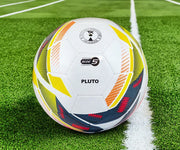Soccer is one of the most popular sports globally. Every kid, every adult knows about it, and chances are, everyone has a favourite team they proudly support. But loving the game doesn’t mean you understand all the details. And that’s okay.
We’ve all been there, cheering from the sidelines or watching late-night matches only to hear the commentator say something like “offside trap” or “false nine,” and we’re left wondering what just happened. The terminologies in soccer can be confusing, even for lifelong fans. Some terms may sound simple, but they carry layers of meaning. Others, like “nutmeg” or “pressing,” leave people scratching their heads.
But that’s the beauty of the sport; it isn’t just a game, it’s a shared language spoken across countries, cultures, and generations. And once you start picking up that language, you’ll see the game differently. You’ll understand the moves, the strategies, the brilliance behind a well-timed assist or a tactical foul.
Core Soccer Terms Every Fan Should Know
Soccer terminology for beginners that builds the foundation for everything else. If you know these, you won’t feel lost in the first five minutes of a match.
- Pitch: The playing surface. Not a field. A pitch.
- Goal: The objective. Score more than your opponent. Simple as that.
- Dribble: Controlling the ball while moving forward, usually to beat a defender.
- Pass: Distributing the ball to a teammate with purpose.
- Shot: A strike intended to score.
- Tackle: A move to dispossess an opponent—timing is everything.
And then there’s the goalkeeper—the lone player allowed to use their hands, but only inside the penalty area. They’re the last line of defense and often the unsung hero.
Know Your Role: Understanding Soccer Positions
Understanding soccer positions is more than memorising names. It’s about grasping how each player contributes to the flow and shape of a match.
- Goalkeeper: Stands between glory and heartbreak.
- Defenders: Centre-backs anchor the backline; full-backs cover the flanks and support the attack.
- Midfielders: The engine room. They control tempo, link play, and dictate rhythm.
- Forwards (Strikers): Finishers. Opportunists. The ones expected to put it in the net.
- Wingers: Stretch the pitch, deliver crosses, and create space.
Common Soccer Phrases That Mean More Than They Sound
Commentators and analysts love their linguistics. These soccer phrases aren’t just filler, they explain how the game unfolds.
- Nutmeg: Slide the ball through your opponent’s legs. It’s disrespectful and brilliant at the same time.
- Park the bus: A defensive set-up where a team crowds their half to deny space.
- Offside trap: A coordinated defensive move to catch an attacker offside.
- Panenka: A daring penalty chipped delicately down the middle.
- Pressing: Applying pressure without the ball. High, mid, or low block—all tactical decisions.
These phrases bring life to match analysis and highlight the game’s depth.
In-Game Terms That Shape Every Match
To follow a match like a seasoned viewer, you need to grasp the soccer vocabulary that pops up in real-time situations:
- Offside: When an attacker is ahead of the last defender as the ball is played. Triggers whistles, debates, and VAR reviews.
- Corner Kick: Awarded when the defending team deflects the ball past their goal line.
- Free Kick: Awarded after a foul is committed. It provides the team with an opportunity to either take a direct shot at goal or strategically reset and build up the play.
- Penalty Kick: A golden opportunity awarded after a foul in the box—just the shooter and the keeper.
These terms are fundamental to match flow and decision-making.
On-Field Actions That Shift Momentum
Games are decided by moments. These actions shape them:
- Header: Redirecting the ball using the head, often during set pieces.
- First Touch: That critical first contact with the ball. Sets the tone for what follows.
- Save: A goalkeeper’s most important contribution. Can swing momentum.
- Slide Tackle: A timed challenge that can win possession—or draw a foul.
Mastering these gives players an edge. Recognising them gives fans insight.
From Slang to Strategy: Advanced Terminologies in Soccer
When the tactics get complex, the terminologies in soccer level up. These aren’t just buzzwords; they shape team identity.
- Counter-Attack: Swift transition from defense to offense. Used to punish teams that overcommit.
- False Nine: A forward who drops into midfield to unsettle defenders.
- Tiki-Taka: Short, fast passing to retain possession and break down compact defenses.
- Aggregate Score: Total goals across two legs. Key in tournament play.
These terms are for fans who want to understand how the game is played, not just watched.
Why This All Matters
Knowing the terminologies in soccer doesn’t just make you sound smarter. It changes how you experience the game. You see it with sharper eyes. You anticipate moves. You join in debates with confidence.
Whether you’re in the stadium, on the couch, or chatting with mates, understanding the language of the sport deepens your connection. And that’s what it’s all about.







